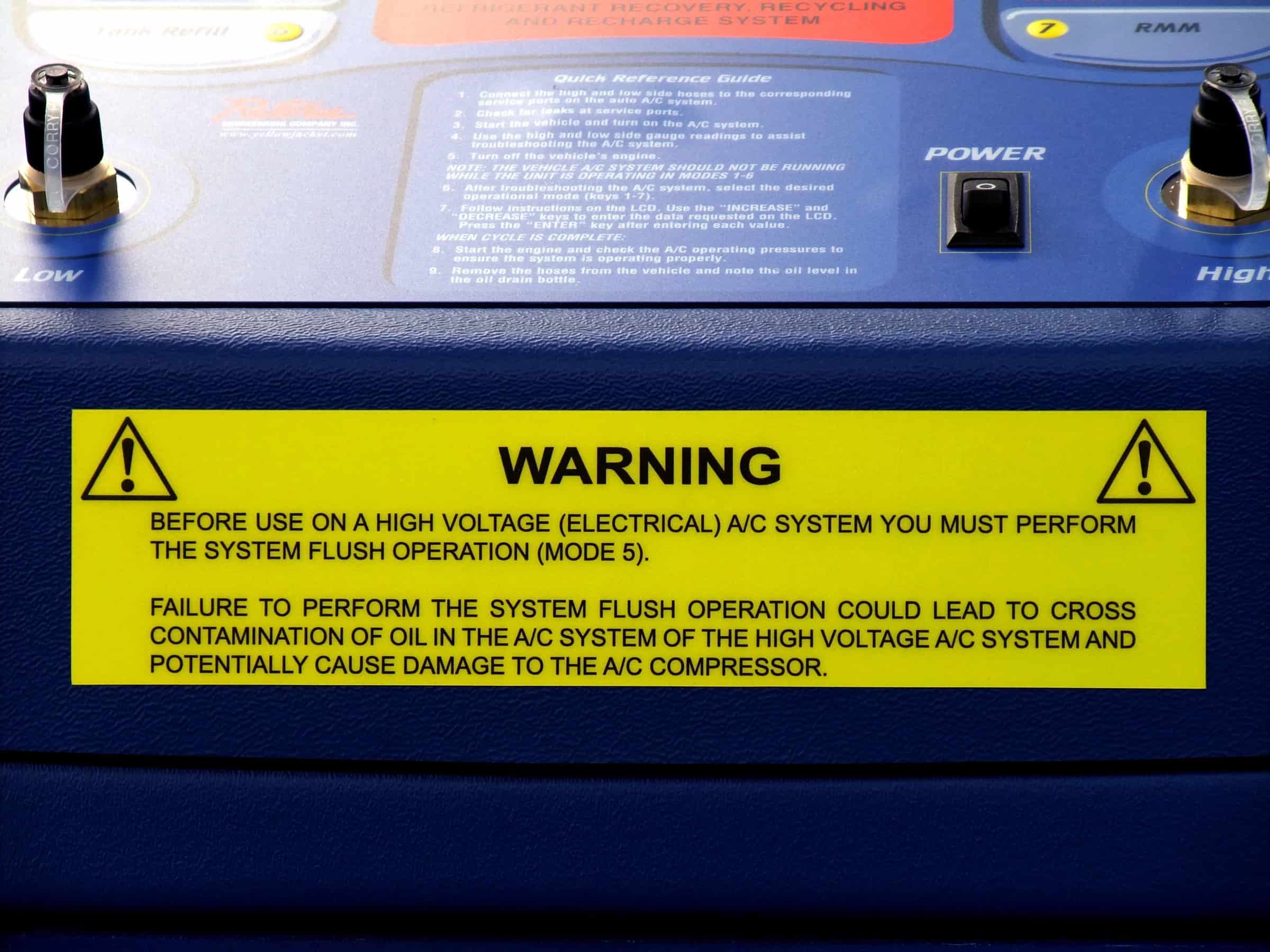The high voltage A/C oil cross contamination issue
What you can do to provide safe service with an existing SAE J2788 machine
If you work on air conditioning, you’ve hopefully heard about the issues regarding high voltage compressors in gasoline-electric hybrids and technician safety when servicing them. And if you have a J2788 recovery/recycling/recharge machine, you’ve probably also heard there are possible dangers (that these new machines do not protect against) when servicing the high-voltage systems.
That’s not correct. What can happen is that over time, service of the vehicle A/C systems can produce a high voltage danger from the system, even a vehicle shutdown. What you should want to do is service the system so the high voltage danger itself cannot occur from the way you do the job. The equipment you use and the way you use it can be a contributing cause and effect, even if it’s someone else servicing the car at the time.
The basic issue: Oil cross contamination of those high voltage systems. Which means residual amounts of PAG oil (from servicing conventional A/C systems) that’s in the service hoses and internal plumbing of recovery/recycling/recharge machines gets into high voltage compressor systems when servicing them, including with J2788 machines. It isn’t a one-time service problem, but over time what you might think is a minuscule buildup of PAG oil in a high voltage system (which uses POE ester oil), can reduce the resistance provided by the POE to an unsafe level.
What does this mean? Either of two things:
- When the ignition is turned on and for the next few seconds, if there is enough liquid refrigerant and oil in the compressor, high voltage electricity could leak across from the compressor motor to the compressor body. And if the technician is touching the compressor at the time… Uh, oh!
- Same low-resistance situation. The computer sees a high voltage anomaly in the high voltage hybrid system, and both triggers a trouble code and shuts down the hybrid system.
As a result, there’s a revision referred to as “H” of the SAE J2788 standard that covers recovery/recycling/recharge equipment for HFC-134a systems. “H” requires that the machine not permit a high voltage hybrid A/C system to suffer excessive cross contamination of its POE with PAG oil, after repeated services. Passing a specific laboratory test that simulates repeated services will be required to ensure this. The equipment manufacturer need not follow any specific engineering method to prevent excessive cross contamination, although most manufacturers use a hose/plumbing flush mode. In this, liquid refrigerant is run through the service hoses and internal plumbing of the machine to clear out residual PAG oil from conventional system service, prior to recovery from or recharge of a high voltage hybrid system. The flushed oil goes into the machine’s oil drain.

